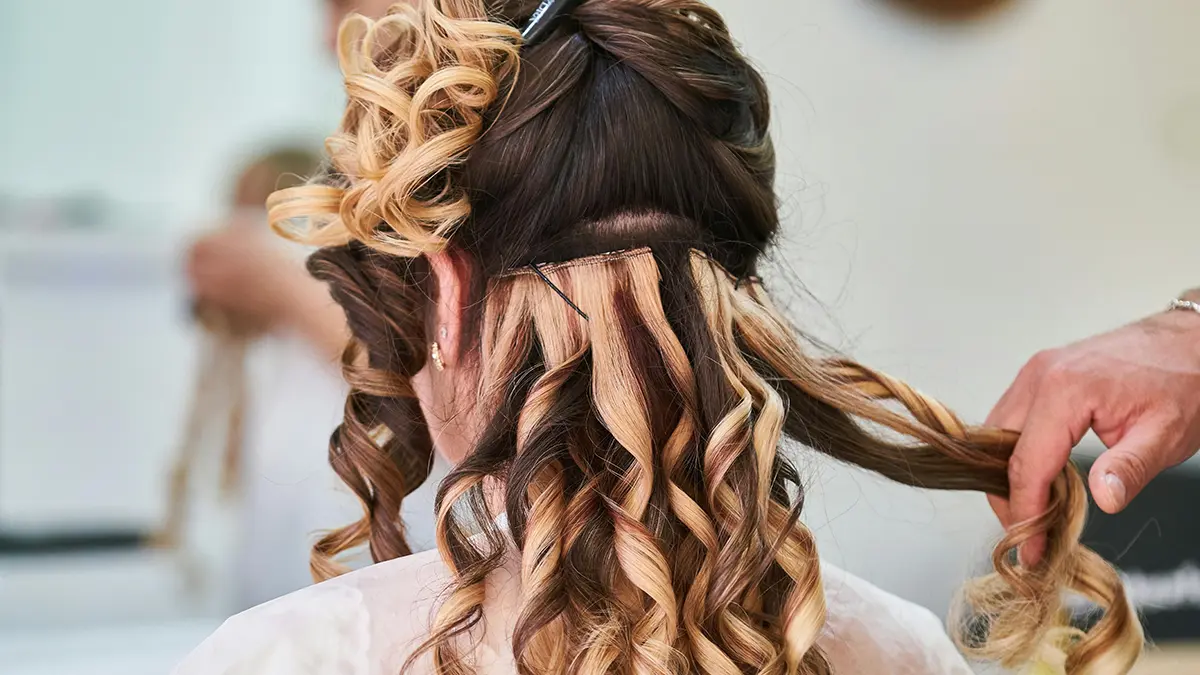
Hair extensions can be transformative, adding instant length, volume, and confidence. But when it’s time to take them out, the process requires just as much care and expertise as when they were installed. According to Cecelia Johnson, owner of Uptown New York Style Hair Salon, removing your hair extensions the right way is crucial to protecting your natural hair’s health and integrity.
Why Proper Removal Matters
If you’re tempted to remove your extensions at home, Cecelia Johnson offers a word of caution:
Extensions are attached in a variety of ways—tape-ins, sew-ins, micro-links, or keratin bonds—and each method requires a specific removal process. Doing it wrong can lead to cutting your own hair, tangling, breakage, or even permanent hair loss.
In contrast, professional removal ensures gentle detangling and product breakdown of adhesives or bonds. We also apply minimum pulling on your natural hair and scalp. Your scalp is also thoroughly cleansed and treated to restore moisture and balance.
In other words, professional care during removing your hair extensions keeps your hair strong and ready for whatever comes next.
Signs It’s Time to Remove Your Hair Extensions
Cecelia recommends keeping an eye out for these tell-tale signs:
- Extensions slipping or feeling loose
- Tangling at the roots or matting near the bonds
- Itchiness or tension on your scalp
- Hair growth of more than 6–8 weeks (depending on the extension type)
Extensions aren’t meant to stay in forever,” Cecelia explains. “Once they start to shift or your natural hair grows out, you risk stress on your roots. That’s when removing your hair extensions professionally is non-negotiable.
What to Expect During the Removal Process
At Uptown New York Style Hair Salon, the removal process is gentle and rejuvenating:
1. Assessment
Cecelia and her team evaluate your natural hair’s health and the extensions’ condition as well as your scalp’s health. This evaluation helps determine any needed treatments, such as protein for natural hair or adhesive remover for the extensions. In short, it guides the aftercare process to restore hair health.
2. Professional removal
Specialized products and tools dissolve adhesives or loosen bonds safely. For example, if you have bonded/adhesive extensions, we use a specialized removal solution to loosen the bond or adhesive that is holding the extension in place. For tape-in extensions, a solvent is used to break down the adhesive, allowing the extension to be gently pulled away.
Another type of extension application method is the sew-in. And for this type of removal, we first carefully cut loose the threads holding the extensions in place and then gently remove the extension from your natural braided hair. Afterwards, we unbraid your hair.
3. Detangling and cleansing
Each section is carefully combed, then thoroughly shampooed to wash away any leftover glue or bonding solution from the natural hair. Next, Cecelia applies a nourishing conditioner or treatment to add moisture back to the scalp and hair, promoting their health.
4. Trim and refresh
Cecelia provides personalized advice for maintaining your natural hair’s health. For instance, she may recommend a light trim to keep your ends healthy and styling to manage your hair after extensions.
Most clients are surprised by how good their natural hair feels after proper removal, Cecelia says. It’s like hitting the reset button for your scalp and strands.
Trust the Experts at Uptown New York Style Hair Salon When Removing Your Hair Extensions
When it comes to removing your extensions, expert hands make all the difference. Cecelia Johnson has years of experience helping clients transition from one look to another. All done safely and beautifully.
Whether you’re ready for a new set of extensions or simply want to embrace your natural hair, book a consultation with Cecelia today. She will ensure your removal process is smooth, gentle, and tailored to your hair’s unique needs.
You may also enjoy reading: You’re Going Gray: What Does That Mean to You?











